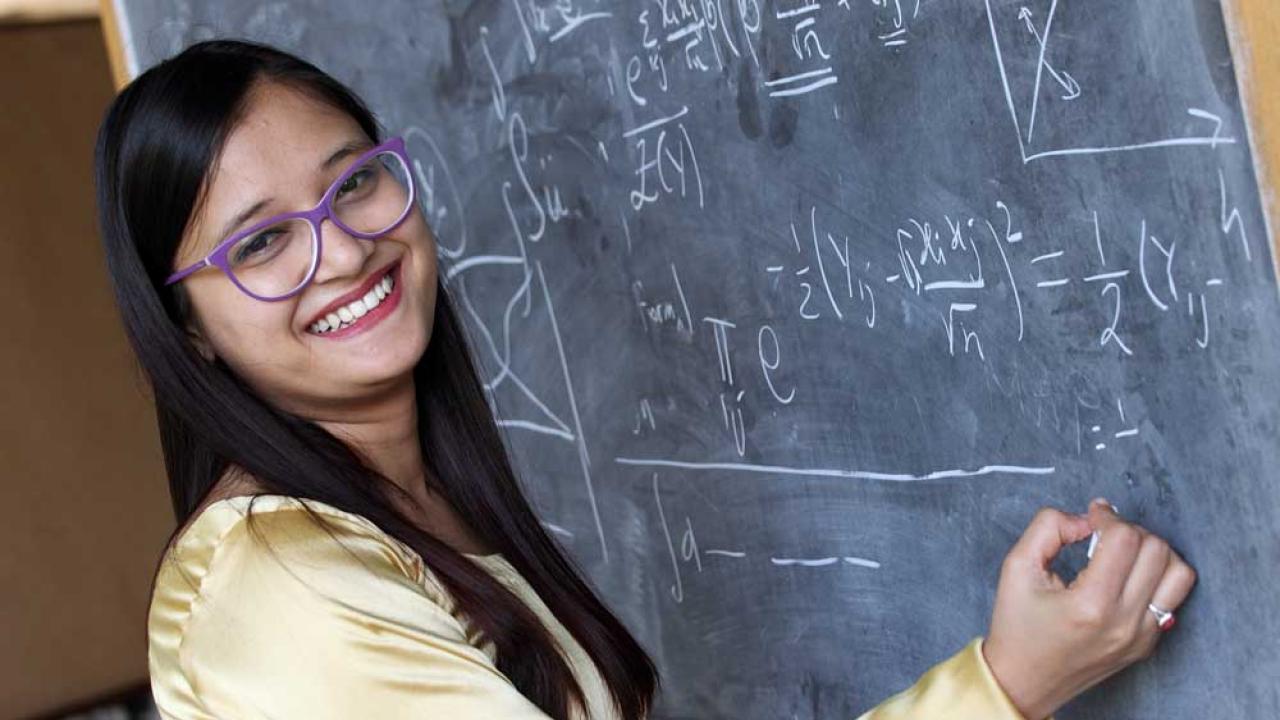
Sometimes, one day can sharply redirect a career. “I had no idea about tectonic plates before the earthquake,” says Apsara Sharma Dhakal, a Nepalese geophysicist and ICTP Postgraduate Diploma student of the class of 2018-2019. Dhakal lived through the magnitude 7.8 earthquake that shook Nepal in April 2015, killing thousands and flattening towns. “I thought I was going to die,” she remembers. She survived, with a newfound interest in geophysics, and is about to start a PhD in the field, after completing an intense Diploma year studying with ICTP's Earth System Physics section.
“I was doing a masters degree in physics at Tribhuvan University in Kathmandu, and wanted to go on with my studies,” says Dhakal. “In my country, whenever a girl passes the masters, she usually gets married, or is expected to get married and stop studying.” Some in her family encouraged her to try for a government job that would have brought long-term security. “But my father was supportive, he knew I wanted to continue my studies.”
Several of Dhakal’s professors recommended the ICTP Postgraduate Diploma Programme as a next step, and some are alumni of the programme themselves. After speaking to several other Diploma alumni who graduated more recently, Dhakal decided to apply. But not in astrophysics, which had been her field during her masters degree. Geophysics courses were not available during her bachelor’s degree at St. Xavier College in Kathmandu, nor during her masters, and after the earthquake the possibility of studying geophysics at ICTP intrigued her. When she was accepted to the programme, she declined a PhD programme offer in condensed matter physics in the US and boarded a flight to Italy.
Here, she embraced the geophysics courses and started working on her Diploma thesis with ICTP scientist Abdelkrim Aoudia and postdoctoral fellow Blaž Vičič. Investigating the changing frequency of earthquakes along active faults, Dhakal’s work focuses on methods for detection of similar and repeating micro earthquakes in northeast Italy. “If you’re able to detect and analyse patterns of micro earthquakes, you can understand all sorts of things about the behaviour of faults,” says Dhakal. Faults, fractures in the Earth’s crust, come in many configurations and shapes, not to mention depth extensions. “With micro earthquakes, you can determine the extent and depth of the part of the fault capable of generating earthquakes as well as the mechanics of the fault's behaviour,” says Dhakal.
Dhakal's home country of Nepal has been investing in research and development in recent years, with a jump from 0.05% to 0.30% of GDP devoted to R&D per year from 2008 to 2010, according to the 2015 UNESCO Science Report. The country is now rebuilding after the 2015 earthquake, and its number of students attending university remains strong. Many students leave Nepal to pursue graduate studies, as Dhakal has, due to the few programme options in Nepal. The country's rate of publishing has increased considerably over the last few decades, even while unreliable electricity and other resources has hampered education at all levels, not to mention research. The gender gap in education and research, as Dhakal mentioned, is also considerable in Nepal, with women making up only 8% of researchers in 2010. The country's research policies are frequently focused on addressing urgent issues common to many low-income countries: access to energy, increasing agricultural output, and adapting to climate change.
Dhakal will continue her research at ICTP for several months beyond her graduation from the Diploma Programme, before she starts her PhD. She will be going to the University of Padova in Italy to study with Italian geophysicist Lapo Boschi. “I’ll be working on broad band time reversal methods, ways of working backwards to determine the source of an earthquake,” says Dhakal. “The earthquake rupture process is largely not well understood, so using the surface wave data and reversing them helps us map the spatial and temporal evolution of the rupture. It’s exciting to be finding ways to uncover totally new geophysics.”
That excitement is driving Dhakal’s future plans to stay in the field: she hopes to do one or two postdoctoral postings after her PhD. “Then, I would like to go back to my country and establish my own lab,” she says. Dhakal would like to inspire young students to be curious about the inner workings of the Earth, and also to do geophysics research in a country so directly affected by it. “It’s really frustrating that we have all this data but we can’t utilize it locally,” Dhakal explains. “It’s almost as though you can count the number of geophysicists in my country on one hand. I’d like to change that.”
---- Kelsey Calhoun













